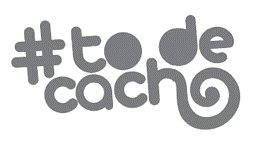The US Court of Appeals for the Seventh Circuit affirmed a district court’s ruling that aggrieved family members’ counterclaims for various intellectual property matters were long overdue and subject to a laches defense. Sumrall v. LeSEA, Inc., Case No. 23-2833 (7th Cir. June 12, 2024) (Scudder, Pryor, St. Eve, JJ.)
During Lester Frank Sumrall’s life, he created a legacy that began as a church, later blossoming into the Lester Sumrall Evangelical Association (LeSEA). Through LeSEA, Sumrall delivered his ministry from Indiana to the rest of the world via television, travel, writings and media productions. These works, including books and films (many of which Sumrall registered for copyrights in his or LeSEA’s name) are the subject of dispute. Particularly in dispute was the ownership of the “Traveler Photo,” a picture that Sumrall’s grandson Lester took during a ministry trip to China while Lester worked for LeSEA.
Sumrall’s death raised issues regarding succession. After his death, Sumrall’s sons, Peter, Stephen and Frank, took over LeSEA. Peter and Stephen relayed to Frank and others that Sumrall left all his assets to the ministry. Eight years later, Lester researched Indiana’s intestate succession law. Believing that Sumrall died without a will, Lester thought Frank should have inherited one-third of Sumrall’s estate. Under this belief, Frank granted Lester power of attorney to legally pursue his interest in the estate. For 12 years, Lester took no further legal action.
After learning that Sumrall did indeed have a will, Lester petitioned an Indiana probate court to open an estate for Sumrall in 2017. One of Lester’s cousins produced the will that granted some personal items to Sumrall’s grandchildren, with the remainder of his estate divided among his sons equally. The probate court denied the petition, reasoning that the estate was devoid of assets.
This case began with LeSEA’s trademark infringement claims against Lester and a competitor Lester created, the LeSEA Broadcasting Corporation. Those claims were resolved after Lester stopped using LeSEA’s name and therefore were not on appeal.
At issue in the appeal were counterclaims brought by the Lester Sumrall Family Trust against LeSEA, LeSEA’s affiliate corporations, and Lester’s uncles and cousins who are currently involved in the ministry (collectively, LeSEA). Lester and the trust asserted that:
- LeSEA unrightfully took ownership of Sumrall’s copyrights.
- LeSEA unlawfully used the Traveler Photo in its materials.
- The trust was entitled to damages for its state law claims.
- LeSEA unlawfully continued to use Sumrall’s right of publicity.
The Seventh Circuit rejected the appellants’ assertion that they owned Sumrall’s copyrighted works. The Court ruled that the appellants’ copyright claim arose under the Copyright Act, which bars suits three years after they accrue. The Court explained that an ownership claim accrues “when plain and express repudiation of co-ownership is communicated to the claimant.” Here, repudiation occurred when Sumrall died 28 years prior to the counterclaim and Stephen and Peter declared in “plain and express” terms that LeSEA owned the copyrights and the remainder of the estate.
As for the Traveler Photo, the [...]
Continue Reading
read more


 Subscribe
Subscribe



